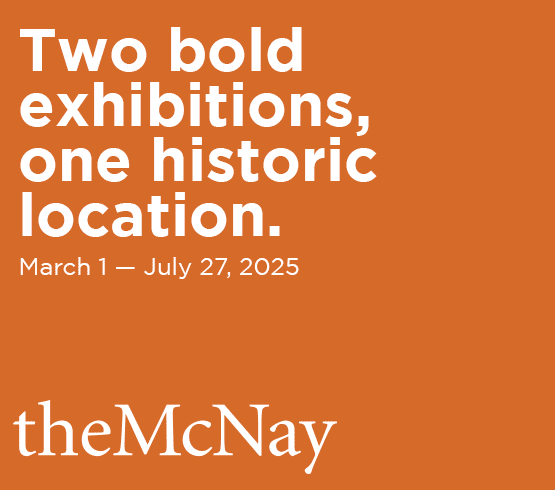Nearly a year into the global pandemic, it’s likely we can all relate to the idea of the imagination as a passport. Psychic freedom has long been important to artist Shirin Neshat, because the borders of her physical world have been especially unyielding. “Dreams are able to cross boundaries,” Neshat explains. “What I dream is a way of approaching reality.” The formative event in Neshat’s life was the Islamic Revolution of 1978-79, which unfolded while she was a student in California. She has never returned home. The effects of this event reverberate through Neshat’s photography and video work, three decades of which will be on view this spring in a retrospective exhibition at the Modern Art Museum of Fort Worth. The show, titled I Will Greet the Sun Again runs Feb. 28 through May 16.
In some of her photographs, Neshat has superimposed calligraphic poetry which snakes and spirals over the face or hands like a tattoo. Much of the text has been appropriated from poet Forough Farrokhzad, an Iranian writer who died at a relatively young age, but who Neshat describes as a personal “hero. The way she speaks is so full of metaphor.” In a reference to these inscribed photographs, the exhibition’s title borrows a line from a poem by Farrokhzad, one full of evocative imagery and references to death and birth. “She did a sacrilegious thing,” Neshat says about Farrokhzad’s taboo-breaking expressions of female sexuality, “but she did it with a profound sense of allegory.”
“After Trump was elected and my home became jeopardized,” she realized, “It’s time for people like me to offer my perspective.” The resulting work is the exhibition’s most recent- Land of Dreams—a lush black and white film in which the artist shows her spiritual and physical journey through parts of America. The terrain is vast, and the people are dreaming, both literally and figuratively, creating worlds from their imagination. The film’s main character is a stand-in for the artist, a woman whom the narration describes as “lost.” As an artist living between two cultures, she says “you train your creativity to relate to multiple people. If I was talking to just an Iranian audience I might strategize differently.” The aesthetic is stylized and haunting, but “Land of Dreams is so much about reality,” Neshat insists. It’s about “all of us living together and making it our home.”

1 ⁄5
Shirin Neshat, Untitled, from Roja series, 2016. © Shirin Neshat/Courtesy the artist and Gladstone Gallery, New York and Brussels.

2 ⁄5
Shirin Neshat, Ilgara, from The Home of My Eyes series, 2015. © Shirin Neshat/Courtesy the artist and Gladstone Gallery, New York and Brussels.

3 ⁄5
Shirin Neshat, Untitled (Women of Allah), 1996. © Shirin Neshat/Courtesy the artist and Gladstone Gallery, New York and Brussels.

4 ⁄5
Shirin Neshat, Offered Eyes, 1993. © Shirin Neshat/Courtesy the artist and Gladstone Gallery, New York and Brussels.

5 ⁄5
Shirin Neshat, Bonding, 1995. © Shirin Neshat/Courtesy the artist and Gladstone Gallery, New York and Brussels.
—CASEY GREGORY




